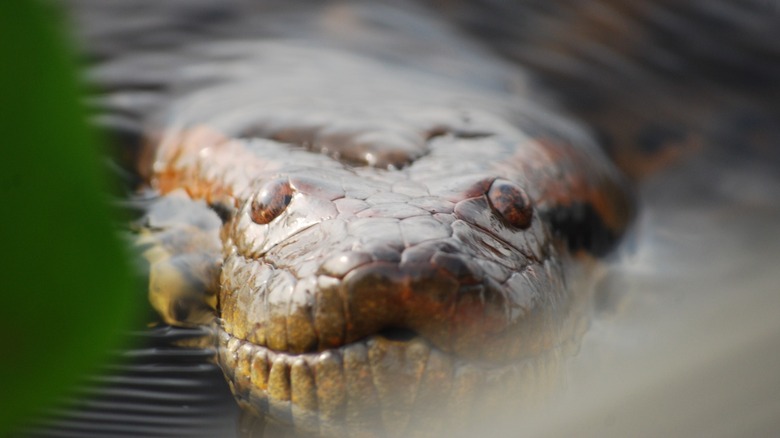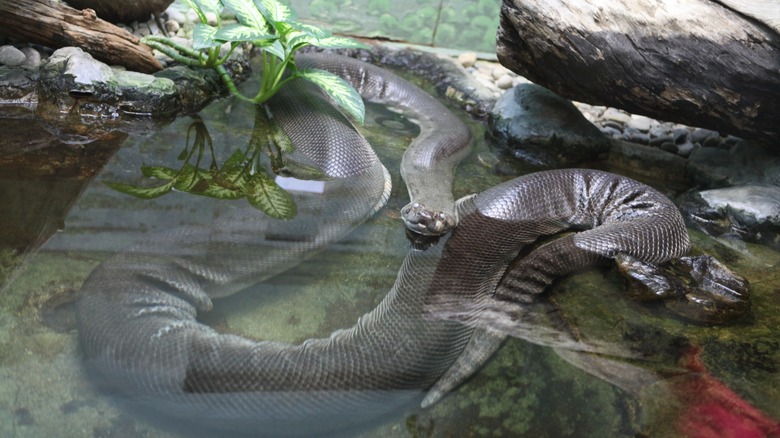The Biggest Python In Florida Is Nothing Compared To The Biggest Anaconda
The Burmese python, an invasive species that's destroying the Florida Everglades, is among the largest snakes in the world — both in length and weight. The longest ever recorded — caught by two hunters in Florida's Big Cypress National Preserve in 2023 — measured 19 feet long and weighed 125 pounds. The heaviest ever recorded — caught by wildlife biologists at the Conservancy of Southwest Florida in 2022 — measured 18 feet long and weighed 215 pounds. Compared to the biggest anaconda ever recorded, these pythons are pretty small.
While filming "Pole to Pole" for Disney+ in 2024, National Geographic researchers in the Amazon rainforest in Ecuador found the biggest recorded green anaconda, which measured 26 feet long and weighed 440 pounds. That's 7 feet longer and more than twice as heavy as the largest Burmese pythons captured. Also, this weight makes it the heaviest snake in the world, but there may be even bigger specimens.
According to Guinness World Records, there's an unconfirmed record of a green anaconda that was 27.7 feet long and weighed an estimated 500 to 880 pounds. That specimen was shot in Brazil around 1960, and its weight is calculated so high because it had a girth of 3.6 feet. As one of few predators that are actually a threat to crocodiles and alligators, the Waorani people of Ecuador say that these snakes can grow to be 30 feet long and more than 1,100 pounds. On average, though, the females measure 9.8 to 16.3 feet long with a 1-foot girth and weigh 550 pounds or more.
Facts you might not know about green anacondas
Green anacondas are one of the top predatory animals in the tropical rainforest food chain, and they actually spend most of their lives in water — mainly slow-moving rivers and streams in marsh and swamp lands. While they may not be deadly in the same way as the king cobra — the longest venomous snake in the world that can kill you in minutes — their massive, muscular bodies are their lethal weapons. As members of the boa family of snakes, they constrict or squeeze their prey to death, and that prey can vary from fish and turtles to deer and other mammals, including jaguars. Although, they can go weeks to months without feeding.
Until recently, scientists believed that green anacondas (Eunectes murinus) were a single species, but in 2024 researchers published a paper in MDPI Diversity detailing that there are actually two species of green anaconda, separated by a 5.5% difference in genetics without evidence of interbreeding despite appearing to coexist. For comparison purposes, chimpanzees and humans are only separated by a 2% genetic variation. The original species has been dubbed the southern green anaconda, while the newly discovered species has been named the northern green anaconda (Eunectes akayima). The discovery was made in the Ecuadorian Amazon during the same filming excursion of "Pole to Pole" for National Geographic that found the record-breaking anaconda.

